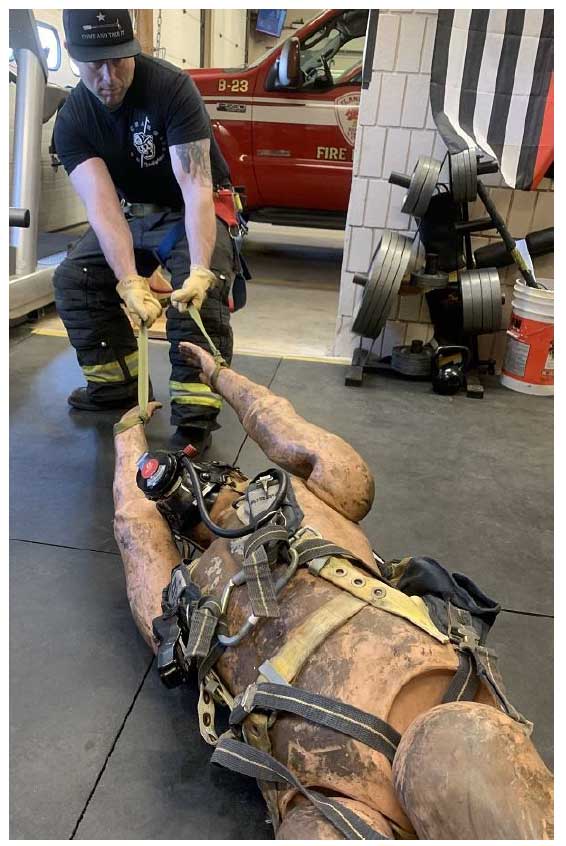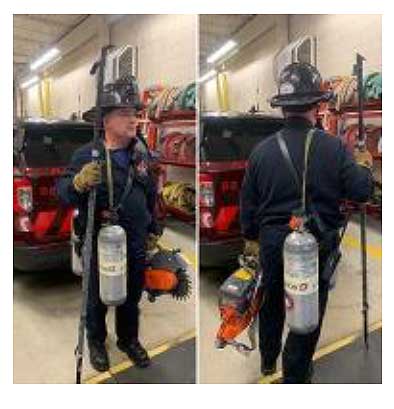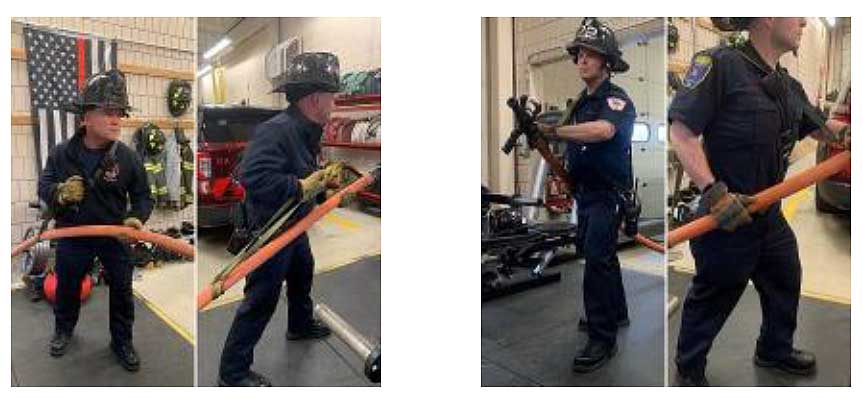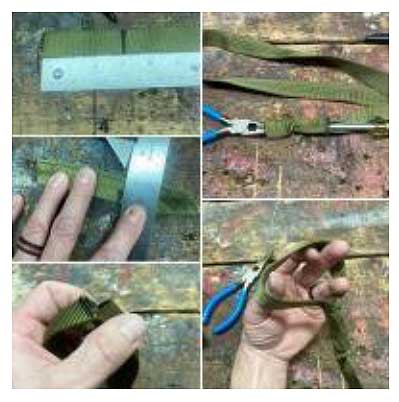By AB Turenne
Like a magician storing a rabbit in their hats or stuffing flowers up their sleeves, firefighters for years have held small tools and equipment on reserve in the pockets of their turnout gear. You can rummage through the gear grid of any firefighter and find pliers, wedges, and window punches in their pockets in the event their unique use and purpose in the fire service is needed.
In all sets of my gear, I keep a self-tensioning webbing slash that consists of two close-ended loops in each pocket. The left pocket (left being four letters) I store a four-foot piece and in the right pocket (right being five letters) I store a five-foot piece. Various lengths (such as the six-foot one described below) can be created and implemented depending on your department needs or the goal you are wishing to achieve.
An added benefit to the self-tensioning pieces are that they can easily be put into play when faced with dexterity from gloved hands and during times with limited visibility due to smoke conditions. Not having to tie off knots or use hardware makes it simpler and easier when time is urgent, and your other senses are hindered because of your gear and/or the environment you are working in.
RELATED FIREFIGHTER TRAINING
Training Minutes: What’s In Your Pockets?
Training Minutes: Webbing and Victim Drag Techniques
Tools: What’s in Your Pockets, and Why?
Through trial, error, and a plethora of training, I have found that the following precut lengths work best when deployed and implemented on the fireground for firefighter/victim removal, transporting equipment from the rig to the scene, and hoseline operations and control.

Firefighter/victim removal: A section cut down to four feet provides the perfect working length for securing the wrists of the individual and for creating a handle for grabbing and dragging.

This can be accomplished by facing the top of the head while walking/crawling in reverse while dragging the victim away from the IDLH environment or by straddling the victim and capturing the end of the webbing with your integrated harness and crawling towards a means of egress with the victim below you.

Equipment carry: Whether you are tasked with creating a tool cache or the need for numerous tools presents itself, I have found that a precut five-foot section works well for transporting self-contained breathing apparatus bottles over the shoulder, thus keeping your hands free to hold and carry saws and other hand tools.
RELATED FIREFIGHTER TRAINING
Training Minutes: Advancing Larger Hoselines with Webbing
Improvise with Your Webbing for a Quicker, Easier Rescue

Hoseline control and operations: Using a six-foot shot of the tubular webbing, this configuration can be used as a makeshift hose strap, providing ease with pulling and positioning a line into place and can be used to relieve some of the weight from the charged hose by capturing two points of the diameter and tossing the strap over your shoulder. This allows you to better control the line’s weight and pressure.

Equipment/Material Needed
▪ Spool of one-inch tubular webbing
▪ Razor blade/knife or trauma shears
▪ Tape measure
▪ Permanent marker
▪ Needle nose pliers

Step by Step
▪ Measure tubular webbing to desired working length.
▪ On each end, make a mark approximately three inches from the end.
▪ Cut the top layer of the tubing only.
▪ Feed/pull the webbing through itself from the cut to the end.
The uses of this strap are limited only to your own imagination, and it can easily be adapted to the needs of your task or assignment to alleviate the need for taking time to tie off knots or having to use additional hardware. Another added benefit to the strap as is that it takes up little to no space in your pockets. It’s also cost effective in that it can be replaced or distributed to your peers without breaking the bank.
AB Turenne is a 22-year veteran of the fire service in Eastern Connecticut and a certified Level II Fire Service Instructor. He is a graduate from the master of public administration program at Anna Maria College.

